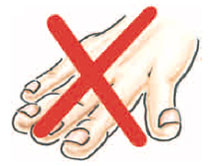Preventing dog attacks in the home
The problem
- Children are more likely to be hospitalised due to dog attack than a car accident.
- Children under 5 years are the group most at risk of dog attack, followed by children 5 to 9 years.
- Most children are bitten by their own dog, or by a dog they know — when playing with, patting or feeding it.
- Most serious dog attacks (resulting in hospitalisation) happen in the home.
The solution
- Active supervision is the key. Never leave young children (particularly children under 5 years of age) alone with dogs.
- Don't allow children to play roughly with dogs, tease or corner dogs, or hug dogs around the neck.
- Teach kids the warning signs of a frightened or angry dog and what to do if confronted by an aggressive dog (see the page 'How to prevent dog attacks in the community').
- Teach kids when to leave dogs alone — when dogs are asleep, feeding, unwell, with pups, tied up, not with owner, in a car, behind a fence or gate.
- Train and socialise your dog. Understand a little about dog behaviour.
Don't do these things to dogs

Don't tease

Don't disturb when sick


Don't approach angry
dogs

Don't cuddle face to face

Don't disturb when
sleeping

Don't disturb when
feeding

Don't approach frightened
dogs

Don't allow dogs near
parties

Don't disturb when with
pups

Don't climb on fences
Page last updated: 28 Nov 2025